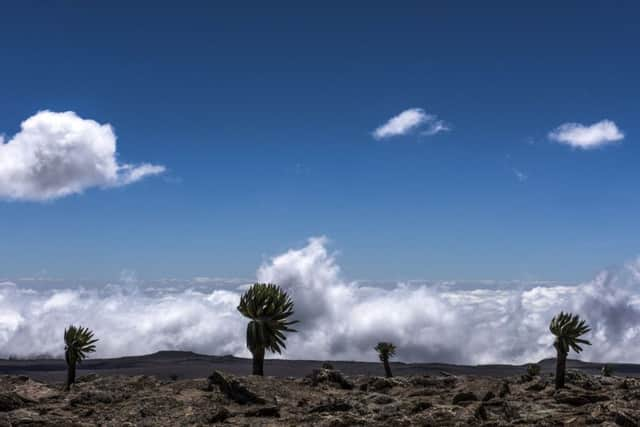Wolves and primates to luxurious mud huts!


A few hundred metres below me, glossy eucalyptus leaves flicker encouragingly like ticker-tape, and sinewy fingers of stratified rock burst upwards, lifting me into the clouds.
Right now, though, nothing can allay my fear. Tackling a six-metre vertical climb to reach the fifth century Abuna Yemata Guh, one of Tigray’s famous rock-hewn churches hidden in the Gheralta mountain range, really does require a leap of faith.
Advertisement
Hide AdAdvertisement
Hide AdLike much of Ethiopia’s ancient past, mystery surrounds the origins of this holy cave, where exquisitely preserved frescoes of wide-eyed archangels emerge from the shadows. Worshippers of all ages still make the difficult journey to celebrate mass, carrying babies, baskets of injera and even dead bodies on their backs. It takes an elderly, muslin-cloaked priest 45 minutes to glide up here, making my sweaty, two-hour attempt look embarrassingly pathetic.
Once a great civilization steeped in Biblical history (it’s widely believed Moses’ Ark of the Covenant resides in the city of Axum), this east African country stirs very different recent memories. During the 1980s, Bob Geldof’s Band Aid appeal broadcast images of poverty and famine to the world, and few would have considered coming here on holiday.
But all that is changing. The country which claims to “make you seven years younger” and knocks all time schedules out of sync (by operating on a different calendar and clock system) is now one of the most progressive nations in Africa. New roads, facilities and - crucially - upmarket accommodation options, are opening doors for tourists.
Especially exciting is Limalimo Lodge, on the edge of the Simien Mountains National Park, which fully launches in September.
Advertisement
Hide AdAdvertisement
Hide AdAfter flying into Gondar, it’s a three-hour drive to perky town Debarq, where we pick up a guide at the park gates - a requirement for every visitor. Passing weatherworn women stooping under the weight of back-buckling eucalyptus bales, we follow a winding dirt road leading uphill to the low-lying 12-bedroom lodge.
Up until young Ethiopian owners Meles and Shif were granted a lease from the Africa Wildlife Foundation, this was common grazing land; part of the pair’s proposal for the new hotel was to involve local community wherever possible.
“When we started building, I went to the local church and invited anyone interested to come and work for us,” says Shif, who’s guided treks through the Simiens for 14 years.
His wife, Julia, who gave up her job as a publisher in England to come and work here, proudly explains most employees live within 5km of the lodge. “Many are farmers who do their irrigation work on days off,” she tells me.
Advertisement
Hide AdAdvertisement
Hide AdThat night, I drift off to sleep in what must arguably be Africa’s most luxurious mud hut. Addis based, Italian architect Mario Balducci chose rammed earth (a mixture of compressed soil and wood) as an eco-friendly, heat-regulating building material, adopting a technique employed hundreds of years ago to build Spain’s Alhambra fortress and the Great Wall of China.
Limalimo’s real selling point, though, is an unparalleled view of the Unesco-listed Simiens. Eroded pinnacles rise from a dry, dusty mist, like castle turrets in the sky, but come October, the earthy, undulating mass will be carpeted with grass and flowers.